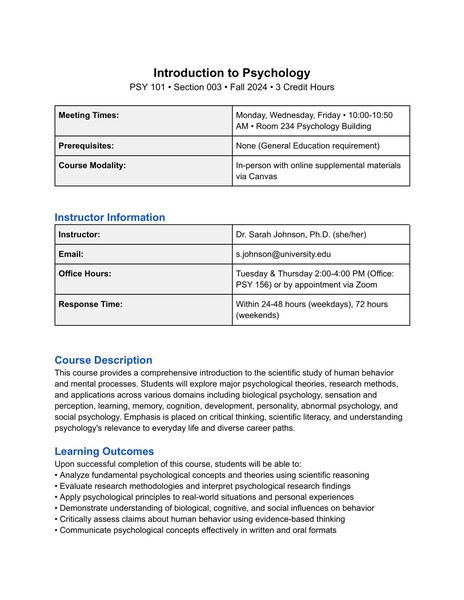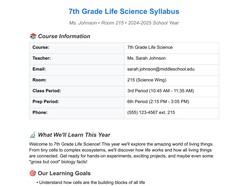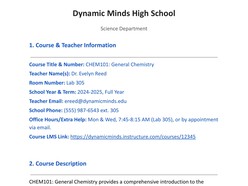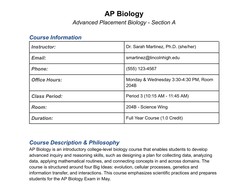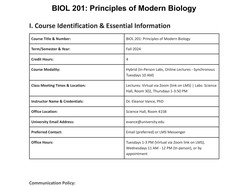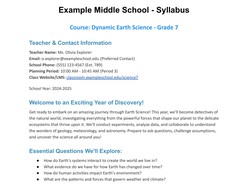A well-structured syllabus serves as the foundation of any successful college course. It's your contract with students, your roadmap for the semester, and often the first impression students have of your teaching approach. This free College Syllabus Template for Google Docs helps you create a thorough, professional document that meets modern higher education standards and institutional requirements.
Whether you're teaching psychology, business, literature, or any other subject, this template includes all essential components required by universities today. Use it to clearly communicate expectations, provide comprehensive course information, and ensure compliance with institutional policies while maintaining a welcoming, student-centered tone.
What's Included:
- Complete course information section with meeting times and prerequisites
- Instructor contact details and office hours layout
- Detailed learning outcomes with measurable objectives
- Comprehensive assessment structure with grading breakdown
- Modern course policies including AI usage guidelines
- Required institutional policies (Title IX, disability services, academic integrity)
- Student support resources and mental health information
- Week-by-week course schedule template
- Professional formatting with tables, headers, and consistent styling
- Sample content based on Introduction to Psychology course
Format: Google Docs
Contributed by: Olivia Davis
How To Use This Free Syllabus Template
Step 1: Open the Template Accessing and editing the template in Google Docs takes only a few steps:
- Click the Download Template button to open the document in Google Docs.
- Select the Use Template button located in the top-right corner of the page.
- Ensure you are signed into your Google account to save and begin editing the file.
Once saved, the template becomes fully editable — ready for customization, printing, and sharing with students.
Step 2: Customize Course Information Replace the sample Psychology course details with your own:
- Course title, number, section, and credit hours
- Meeting times, location, and modality (in-person, hybrid, online)
- Your contact information, office hours, and communication preferences
- Prerequisites, required materials, and textbook information
Step 3: Update Learning Outcomes and Assessments Modify the academic content to match your course:
- Replace sample learning outcomes with your specific course objectives
- Update the assessment structure and grading breakdown
- Adjust assignment descriptions and due dates
- Customize the weekly schedule with your topics and readings
Step 4: Review and Update Policies Ensure all policy sections reflect your institution's requirements:
- Verify institutional policy language matches your university's standards
- Update contact information for campus resources
- Adjust course-specific policies (attendance, late work, technology use)
- Add any additional policies required by your department
Step 5: Personalize and Finalize Make the syllabus reflect your teaching style:
- Add your teaching philosophy or welcome message
- Adjust the tone to match your classroom approach
- Include any special course features or unique assignments
- Proofread all sections for accuracy and completeness
Step 6: Share with Students Once complete, you can print copies, upload to your learning management system, or share the Google Docs link directly with students. Update throughout the semester as needed to reflect any course changes.
